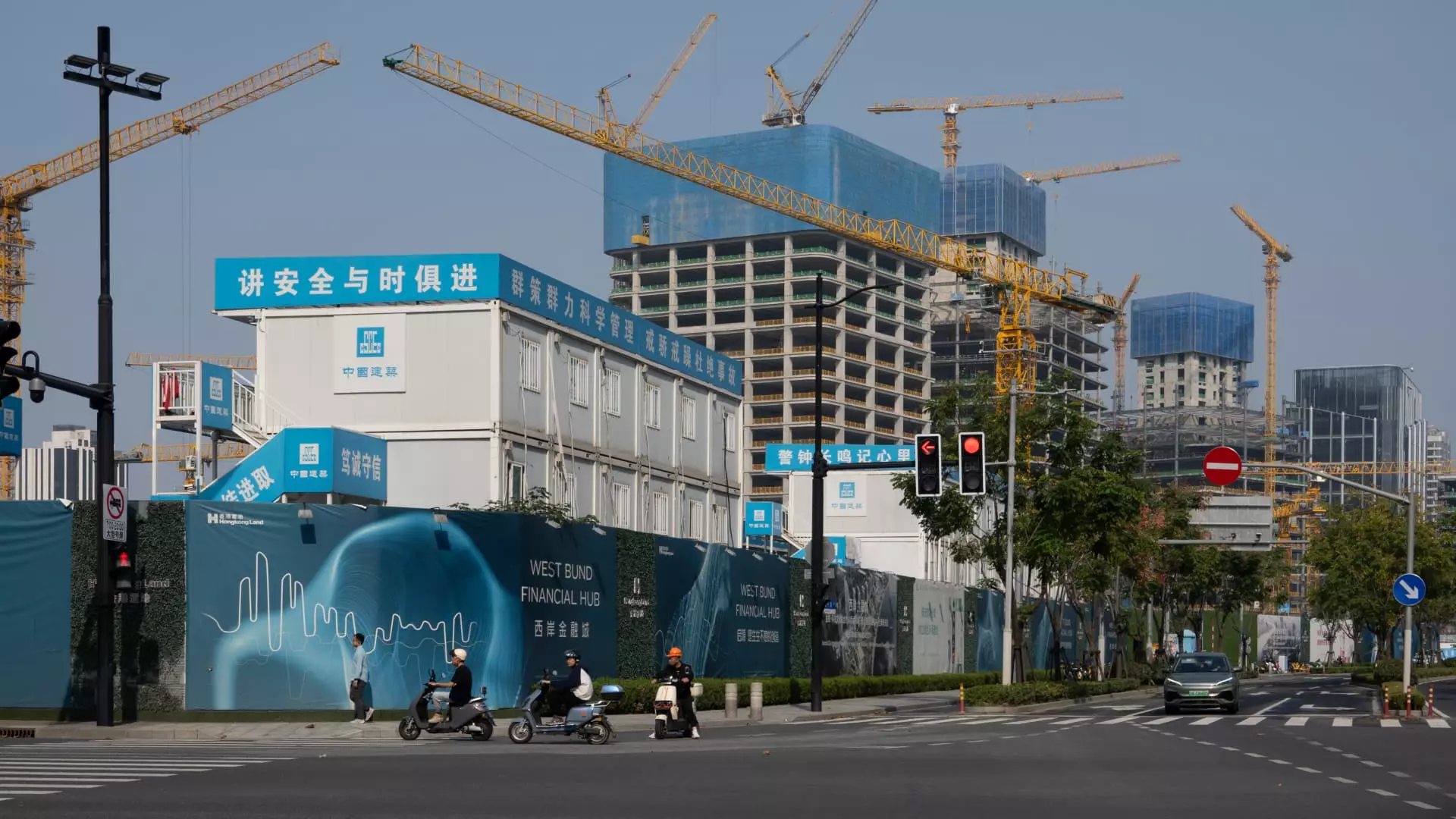In the latest economic report, China has showcased signs of growth in some sectors, particularly retail sales, while grappling with continued challenges in real estate investment. The National Bureau of Statistics has revealed that retail sales for October surged by 4.8% year-on-year, outperforming the 3.8% expected by market analysts. This increase marks a notable recovery from September’s modest growth of 3.2%. Such figures exemplify the effectiveness of the government’s stimulus measures aimed at invigorating consumer spending amidst a slowing economy.
However, industrial production growth fell slightly short of expectations. At 5.3%, it was below the anticipated growth of 5.6%. This disparity suggests that while retail sales are experiencing a rebound, broader industrial activity may face underlying weaknesses that could limit overall economic momentum. Additionally, fixed asset investment, which grew by 3.4% on a year-to-date basis, still lagged behind the anticipated 3.5%, reinforcing concerns about the investing environment in China.
Of significant concern is the further decline in real estate investment, which plummeted by 10.3% in the first ten months of 2023. This decrease represents an exacerbation of the downturn observed in previous months and poses grave challenges for the broader economy. It is the steepest drop since August 2021 and raises questions about the resilience of the real estate sector, a crucial pillar of China’s economic structure.
Official statements from spokesperson Fu Linghui suggested optimism, describing the real estate market as undergoing “active improvement,” despite the stark figures. Analysts like Bruce Pang from JLL suggest gradual stabilization might occur in the next 12 to 18 months. However, the deep-seated issues within the real estate market, exacerbated by previous oversupply and financial mismanagement, cast doubt on such optimistic forecasts.
In response to these economic shifts, the Chinese government has ramped up its stimulus efforts since September. The central bank has implemented interest rate cuts and extended supportive measures specifically targeting the real estate sector. Furthermore, a recently announced fiscal initiative aims to tackle local government debt through a substantial financial commitment of 10 trillion yuan (approximately $1.4 trillion). These measures reflect a proactive approach to managing economic vulnerabilities while attempting to steer the economy toward a more sustainable growth path.
Despite improvements in certain indicators, including a slight decrease in the urban unemployment rate to 5%, the landscape remains fraught with challenges. The statistics bureau noted that existing policies were beneficial, yet they also hinted at persistent external and domestic headwinds that could undermine any gains achieved. Thus, there is a growing need for intensified policy implementation to meet the government’s targeted annual growth rate of around 5%.
A noteworthy divergence is evident in the sectors related to infrastructure and manufacturing, which showed improved investment trends compared to previous months. On the consumer front, the Golden Week holiday’s cautious spending patterns revealed a broader hesitancy among the public, challenging the optimism fostered by positive retail figures. Nevertheless, the Singles Day shopping festival exceeded low expectations, indicating a potential rebound in consumer confidence.
Moreover, while exports displayed encouraging growth—recording the fastest rate seen in over a year—the juxtaposition of falling imports against persistent domestic demand weakness reflects the broader challenges facing China’s economy. Import declines suggest that consumers may still be hesitant to engage with the market meaningfully, despite the recent stimulus, reinforcing the notion that confidence in economic stability is yet to be fully restored.
China’s recent economic data shows a complicated picture marked by both resilience and risk. While retail sales indicate a recovery spurred by government stimulus, the real estate industry’s ongoing struggles highlight significant vulnerabilities. As the Chinese government intensifies its commitment to fostering growth, the efficacy of these measures will be tested against the backdrop of persistent challenges. Maintaining balance across various sectors will be crucial for sustaining economic momentum and achieving the desired growth targets in the coming fiscal year.

